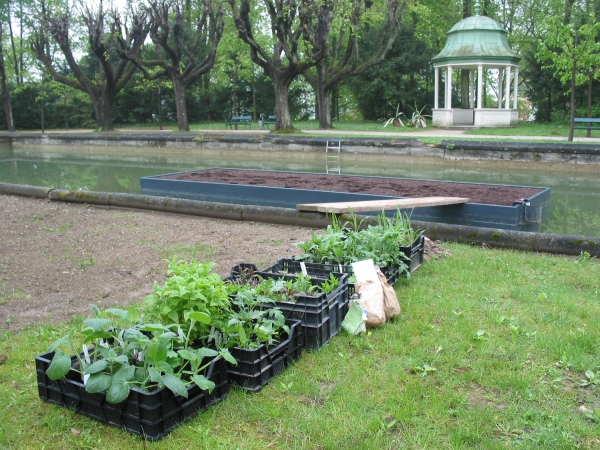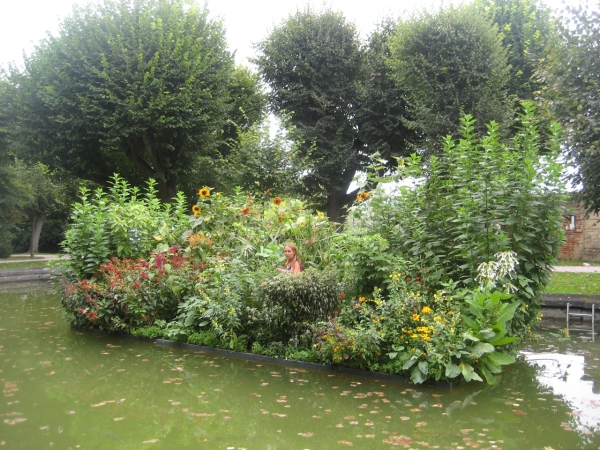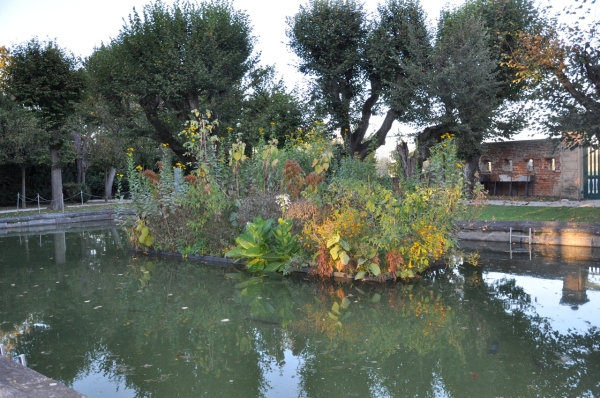Die Neue Welt
Since 2006, permanent
Melk Monastery, Monastery Park, Austria
(a project in conjunction with “Art in Public Space,” Lower Austria)
– “Die Neue Welt,” 2006, steel, cement base, earth, seasonal plantings; 27 x 301 x 92 inches; courtesy “Art in Public Space,” Lower Autria, and the artist
– “Erntedankfest,” 2006, Dining and concert cooks: Andrea Edelbacher, Elisabeth Haslinger
In honor of the Mozart Year 2006, Christian Philipp Müller was invited to design a work of art for the Baroque Garden of the Benedictine abbey Stift Melk in Austria; the work was to shed new light on the historical circumstances under which the Wunderkind, Wolfgang Amadeus Mozart, in 1767 and 1768, performed in the abbey and was then summoned to dine with the abbot. On the top terrace of the newly restored garden, Müller erected a sculpture that explores the themes of change, exchange, and taste. His research in the monastic library into the origin and spread of vegetables and fruit imported into Austria from the New World had revealed that in the eighteenth century, for example, the flowers of tomato and potato plants were used merely as hair ornaments for noble ladies, whereas the tomatoes and potatoes themselves were deemed too poisonous for human consumption. Leopold and Amadeus Mozart had eaten their first potatoes while in London in 1764, however, and hence, long before their visit to Stift Melk. That same year, Johann Bergl completed his bacchanalian paintings of the New World in the Pleasure Pavilion there, unveiling what, at least for the monks, was an unattainable, paradisiacal life.
After long periods of fasting and bloodletting, the monks were prescribed a sojourn in the Pleasure Pavilion on the assumption that the splendid frescoes of distant lands seen there would restore their health. Müller translated the Baroque opulence of the paintings into the three-dimensional reality of the Abbey Garden’s rectangular pond. After placing a steel bath of the same proportions in the golden section of the pond (asymmetrically in relation to its central axis), he immediately set about turning it into a locus amoenus of the New World. At the end of August 2006, Müller celebrated a harvest thanksgiving, commemorating the gifts the natives had presented to the newcomers from the Old World upon their arrival in 1621 — gifts that undoubtedly saved them from starvation. More than a hundred guests were invited to this event and treated to dishes composed of historical, locally grown varieties of amaranth, beans, native corn, potatoes, bell peppers, and tomatoes.
Essay by Thomas Trummer available here.




